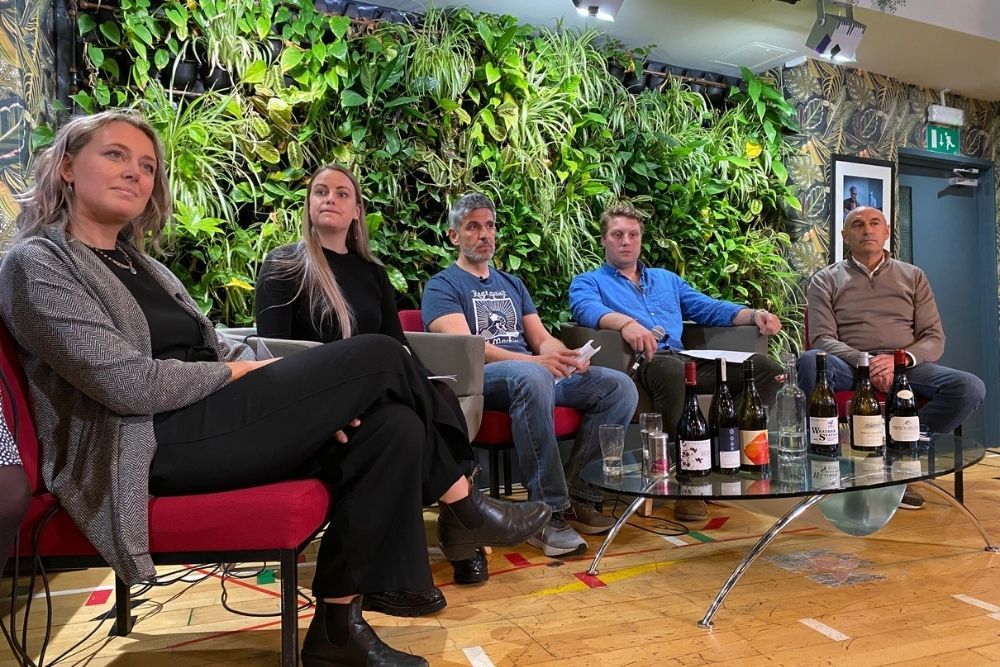“As the wine industry continues to future-proof itself, so more public conversations and panel discussions, like the Eco-Warrior event between winemakers and buyers, will become commonplace, helping us to realise what has already been achieved and what is achievable,” writes Turner.
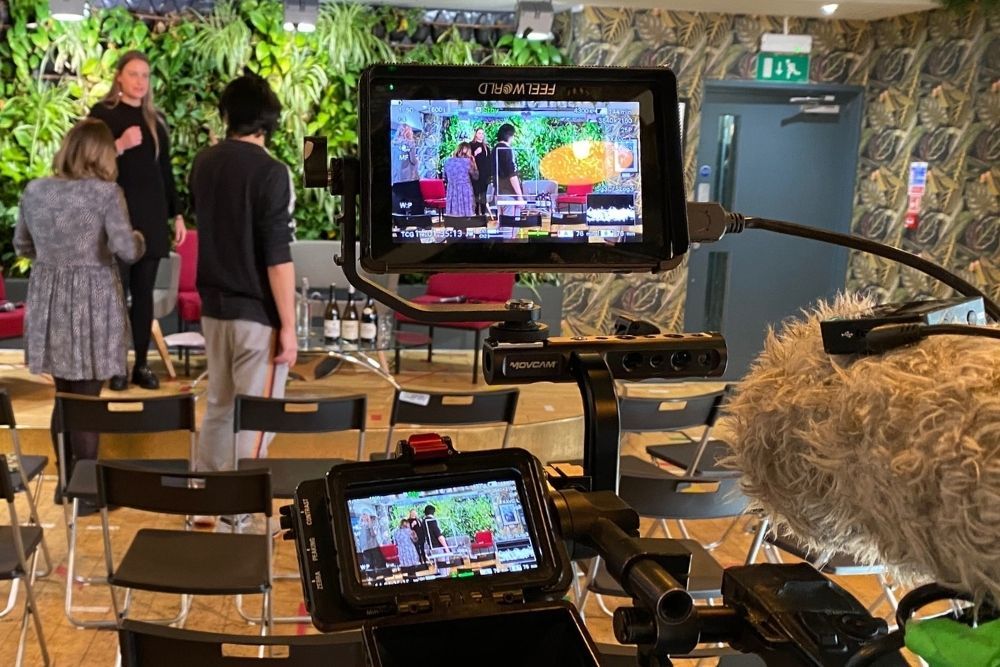
One of the phrases I’ve seen bandied about in the last 18 months is “Build Back Better”. It was adopted by a variety of political parties and candidates at elections and by-elections up and down the country as we looked to open back up, post-COVID. Where it felt it had more meaning, to me anyway, is where it was used in an environmental context. The pandemic (and ensuing lockdowns) had many reacquainting themselves with the natural world and reflecting on our impact upon it, whether that be on their hourly daily walks in parks and woods, or even cheese-and-wine “business meetings” in the back garden.
The changes in perception are already making a big impact on people’s purchasing choices. A recent report from Deloitte* reveals 34% of consumers are now choosing brands based on their environmental and sustainable practices, and almost 30% of consumers now choosing brands based on their ethical values. The report highlights that “ethical and sustainability issues remain a key driver for almost a third of consumers, who claim to have stopped purchasing certain brands due to related concerns.” If you produce or sell anything, it’s a trend you’d be wise not to ignore.
Well, it appears Bibendum are no fools. This week’s Eco-Warrior event highlighted the work done by some of the most forward-thinking and environmentally conscious producers across its portfolio. It included a chance for us to reacquaint ourselves with the current range from fans’ favourites such as Alois Lageder, Catena Wines and David Beaupere. My main interest, however, was more geared to the hour-long panel discussion that kicked off the event, exploring three of the more pressing discussion points as the wine world continues its move towards climate-focused and consumer trending methods.
The Eco-Warrior panel
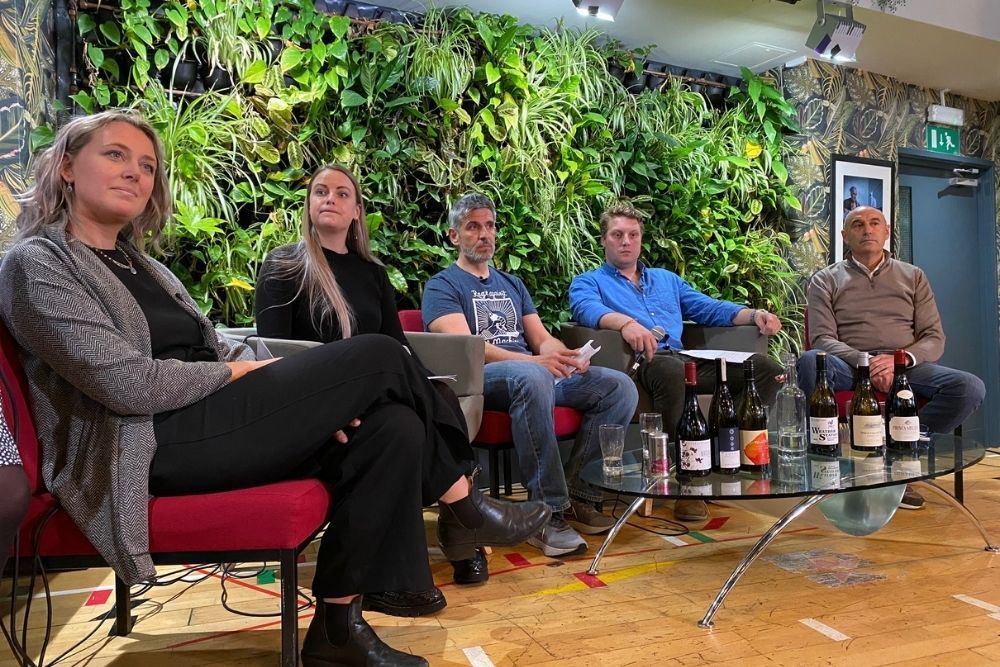
The discussion was co-chaired by Bibendum’s wine trading director, Harriet Kininmonth. In a brief prelude to the panel discussion she revealed that the ESG (Environmental, Social, and Governance) policies of Bibendum are now vital to the way its conducts its business. Parent company, C&C Group, donates an entire and expanding section of its press releases and website to such credentials and that has certainly filtered through to Bibendum.
The other co-chair was wine writer and founder of Little Wine, Christina Rasmussen, who was able to add her own insight from both her own investigations and experiences as one of the UK’s most sustainably focused journalists and retailers.
They were joined by three producers to give their current take on each of the prescribed topics. To talk us through changing grape varieties, new and resurrected forms of packaging, and the myriad of ESG-related certifications were David Sampedro of Bodegas Bhilar in Rioja, Toni Sarrión of Bodegas Mustiguillo in Valenica, and Tom Hanson-Smith of Journey’s End in Stellenbosch.
The changing of the guard for global grape varieties

We are continuing to see many wine regions of the world move away from the so-called international varieties in favour of local, indigenous vines. The mina reason is that in the face of even harsher climates, these varieties are more suited to the locations whether that be the soils, the aspects, or the access to water.
David Sampedro is based in Rioja Alavesa. As much as he’s limited to what he can plant and the blends he can produce if he wants to be part of the Rioja DOCa, he has been able to steadily move away from a near monoculture of Tempranillo. “Phylloxera changed the history of Rioja,” he begins. “Replanting afterwards saw Tempranillo take over, especially in Alavesa.” Whenever he needs to replant, he reveals, he always looks for other varieties indeed he stated “I haven’t planted new Tempranillo vines for over 20 years.”
Such was the dominance of Tempranillo on his 15 hectare farm that it’s still planted with 70% Tempranillo, with many 100-year-old vines, but it’s grapes such as Graciano and Garnacha that are adding interest for him. He favours planting masale selections of clones to add even more variety and protect against extremes of climate.
Toni Sarrión is famed in Utiel-Requena DO for his use of the red variety Bobal, and the white variety Merseguera, but it’s not been easy. “20 years ago, no-one wanted Bobal”, he lamented. “It wasn’t sexy, or easy to sell, or easy to make for that matter.” Many areas moved to almost monoculture plantings of Tempranillo for its fame on domestic and export markets, but Toni stuck with the grapes he’s been working with for decades.
“I feel it adds value to make Bobal in an historic region for Bobal. The market is increasingly receptive. Others make a Cabernet Sauvignon in an area that has a challenging reputation for Cabernet Sauvignon with huge international competition.” He has been pleased to see a recent increase in plantings of Arcos and Forcallat as the trend continues.
Tom Hanson-Smith went straight to the water issue. It’s one that is very close to the mark for producers in the Cape, as Cape Town very nearly ran out of water in 2017. “It was a bleak, but important time” reveals Tom. “We were moving towards more dry farming across the plantings, but this gave us an increased push.” Although they still irrigate where necessary, they part facilitate that by a firm commitment to recycle all the water from the winery.
A new look at wine packaging
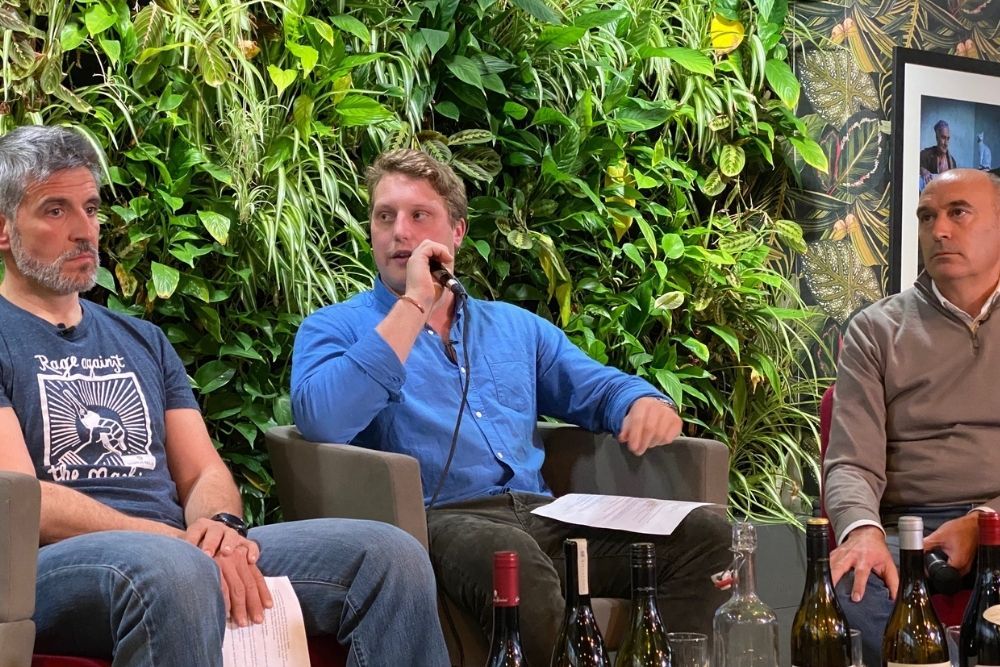
Over recent months and years we’ve seen a definite interest in the trade to look at alternative packaging options. The emergence of canned wine and the renewed interest in bag in box options has shown that these options can work, albeit currently to a small but growing subset of engaged wine consumers.
Hanson-Smith stressed the need of Journey’s End to be pragmatic at this stage. “It’s a constant conversation, and we’re unlikely to get it completely right all the time, but we have engaged with both bag-in-box and cans.” The unfortunate economic reality is that to make these options cost effective they felt they needed to sign up to relatively large volumes that at this stage they might not be able to justify.
But that doesn’t mean they haven’t progressed. “We’re moving our average empty bottle weight from 440g to 410g. On the face of it that doesn’t sound a lot, but scaling up to hundreds of thousands of bottles a year and it is well worth doing.”
Sampedro once again pointed to the rules of the DOCa in terms of is packaging options, but joined Rasmussen in pointing out that other carbon minimising or sequestration techniques are important to engage. He now runs his Demeter-certified farm on horse power, rather than tractor, a move slowly being echoed in many regions of the world. “The tractors may be quicker, but they are more expensive and compact the soil.” Less compact soils means healthier soil microbiota which in turn leads to greater carbon-storing potential.
Sarrión pointed to the health of his own soils following a move to dry farming. “At the start it was tough, and in year one we saw a drop in yields.” But Bodegas Mustiguillo stuck to its guns, and with the help of cover crops and herds of sheep, the soil health began to return to its natural balance. “By year two we noticed a return of tannic structure to the wines, by year three it was getting there, and by year four we were making the best wines we’d ever made from fabulous fruit… which we put down to the health of the soils.”
To certify or not to certify?

So should a wine producer seek certification or not? When talking to consumers about sustainability, organics, and biodynamics in the tastings I run, I always dread the question “Well how do we know?” The wines from Bibendum are often destined for a hand sale, whether in store or at a restaurant or bar, so the full story of the winemaking can be revealed without the need for a specific certification label.
I still think we’re making consumers’ lives too hard on this matter as the industry is still at a stage when many producers practise a certain viticultural ethos but, for whatever reasons, decide not to certify or label the wine as such.
“We’re Fairtrade-certified, but don’t put it on the bottle,” notes Hanson-Smith, “instead we use profits from our Fairtrade wines to allow the workers to spend the money on their own projects, whether that’s housing or education for their kids.” He declares that there can be no ‘one-size-fits-all’ solution, especially given the unique regional issues faced across the world.
The Journey’s End Foundation came into its own during COVID, an extremely challenging time for many in South Africa. The Foundation’s eight soup kitchens provided 1.2 million hot meals between October 2020 and October 2021. The operation is now officially carbon negative and is working towards the global and multi-industry B Corporation certificate.
Bodegas Bhilar is Demeter-certified, but it’s not something Sampedro did by choice. “Some customers wanted it, so overall it was worth it, but the time and paperwork and expense of certification is prohibitive for many.” He followed on from Hanson-Smith’s points that it’s important to do regionally-specific initiatives and best practices, something that has been seen recently in Bordeaux. But in a region like Rioja, much like other fine wine regions of the world, the money tends to go to the bigger wineries with limited opportunities for individuals. This led to Sampedro following the trend of renting out winery space to up-and-coming winemakers in the region. “When you’re starting out, money is not easy and a winery is an expensive project given you only really need it for 15 days a year!”
Sarrión’s winery, Mustiguillo, achieved organic certification in 2007 which was also mainly aimed at export markets. His main priority is to stop people using pesticides and herbicides in the industry. “It’s all about having happy and healthy soils. We use wild yeast fermentation and minimal intervention techniques, but it starts with the soils.” That brought us nicely to a quick discussion on the use of the term ‘Natural Wine’, a term that made Sarrión’s eyebrows furrow.
“The term ‘Natural Wine’ is a big mistake, we need a better definition. If your only definition is that you can’t add SO2 then what is that about? You can still use pesticides and herbicides. You can still sit next to me at a café and drink orange juice laced with SO2. There must be more to it.” Certifications provide those defined parameters in organics, biodynamics, and increasingly agreed parameters for ‘sustainability’ approaches.
An event which heralds more discussions to come
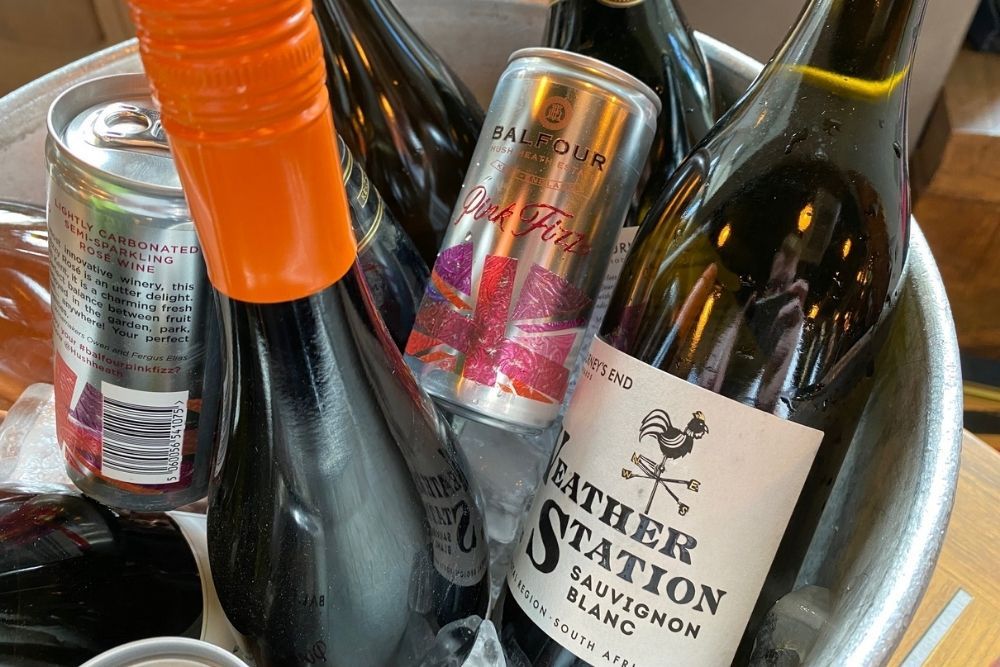
For those of you who are already rolling your eyes at more conversations about the dreaded word ‘sustainability’ or environmentally friendly practices, you might want to look away for…well…quite a few years into the future. Bibendum’s Eco-Warrior tasting was a taste of more things to come. Those of you who read investor reports in the manufacturing and automotive sectors will have already seen that analysing an industry or producer’s carbon footprint is being followed by auditing their ‘water footprint’, something that the wine industry will also need to address en masse. Every aspect of an industry’s practices are going to be increasingly scrutinised by consumers and commentators alike.
As the wine industry continues to future-proof itself, so more public conversations and panel discussions, like the Eco-Warrior event between winemakers and buyers, will become commonplace, helping us to realise what has already been achieved and what is achievable.
For more information about the producers on this panel discussion or about Bibendum’s Eco-Warrior event, please contact Victoria Vickerman on VVickerman@bibendum-plb.com.
Mike Turner works as a wine writer, educator, presenter, and judge through his company Please Bring Me My Wine. He also runs wine events and e-commerce business, Feel Good Grapes from his base in the East Midlands.
* Sustainability & Consumer Behaviour report 2021, Deloitte.
